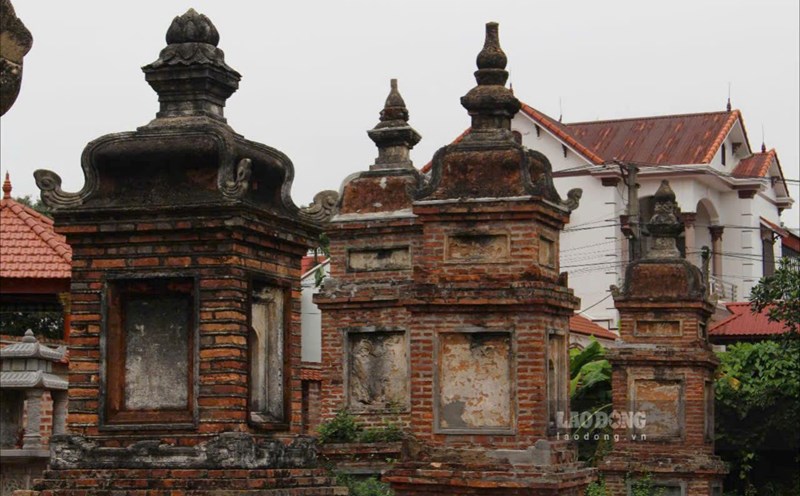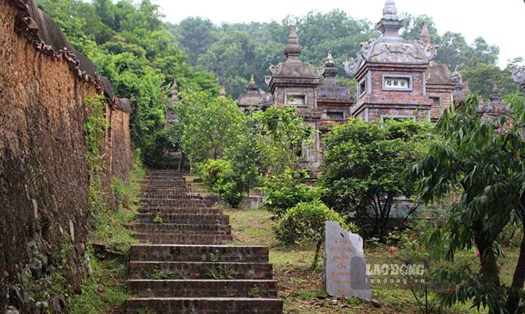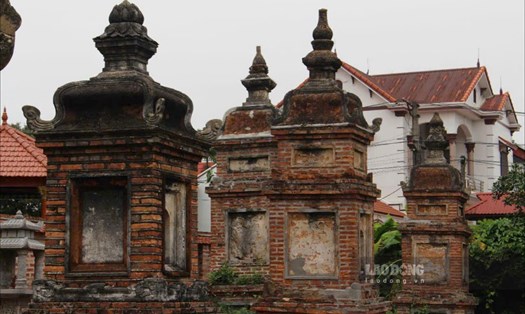Bac Ninh is not only famous for its lyrical Quan Ho melodies that captivate people's hearts, but is also one of the cradles of Vietnamese Buddhism. The ancient and sacred pagodas are still intact through the ups and downs of history, attracting tourists from all over to travel and explore.
Vinh Nghiem Pagoda
Vinh Nghiem Pagoda is considered the birthplace of Truc Lam Zen sect. Vinh Nghiem Pagoda is also known as Duc La Pagoda (literally Vinh Nghiem Tu), located in Quoc Khanh village, Tan An commune.
This is an ancient pagoda that dates back to the Ly Dynasty, and was restored and built by Buddha, the Tran Nhan Tong, in the 13th century, to become the center of Buddhism of the Truc Lam Zen sect.
The pagoda has the main architectural blocks: Tam Quan Gate, Fore-Street Building, Thieu Huong, Thuong dien, First Ancestor's House, bell tower, Second Ancestor's House, Two rows of east-west corridors, Tower Garden.

Currently, the pagoda preserves many ancient artifacts such as the system of Buddha statues, the plankets of the plankets, paintings, stone steles... Notably, there are 3,050 wooden planks engraved with Han and Nom characters, including Buddhist books, the careers of the monks and many books to guide treatment with folk remedies...
These woodblocks are carefully preserved, the letters are very sharp, and have invaluable artistic value. In 2012, the Vinh Nghiem Pagoda carpentry was recognized by UNESCO as a Documentary Heritage of the Asia-Pacific region under the World Memories program.
Bo Da Pagoda
Bo Da Pagoda (Van Ha Ward, Bac Ninh) is a famous ancient landmark, with the largest tower garden in Vietnam. Along with Vinh Nghiem Pagoda (Duc La), Bo Da Pagoda is a major Buddhist center of Bac Ninh, belonging to Truc Lam Zen sect.
The pagoda's correct name is Quan Am pagoda, Bo Da mountain, located in a prime location, located north of the foot of Phuong Hoang mountain in the Bo Da mountain range, in the distance is the poetic Cau River.
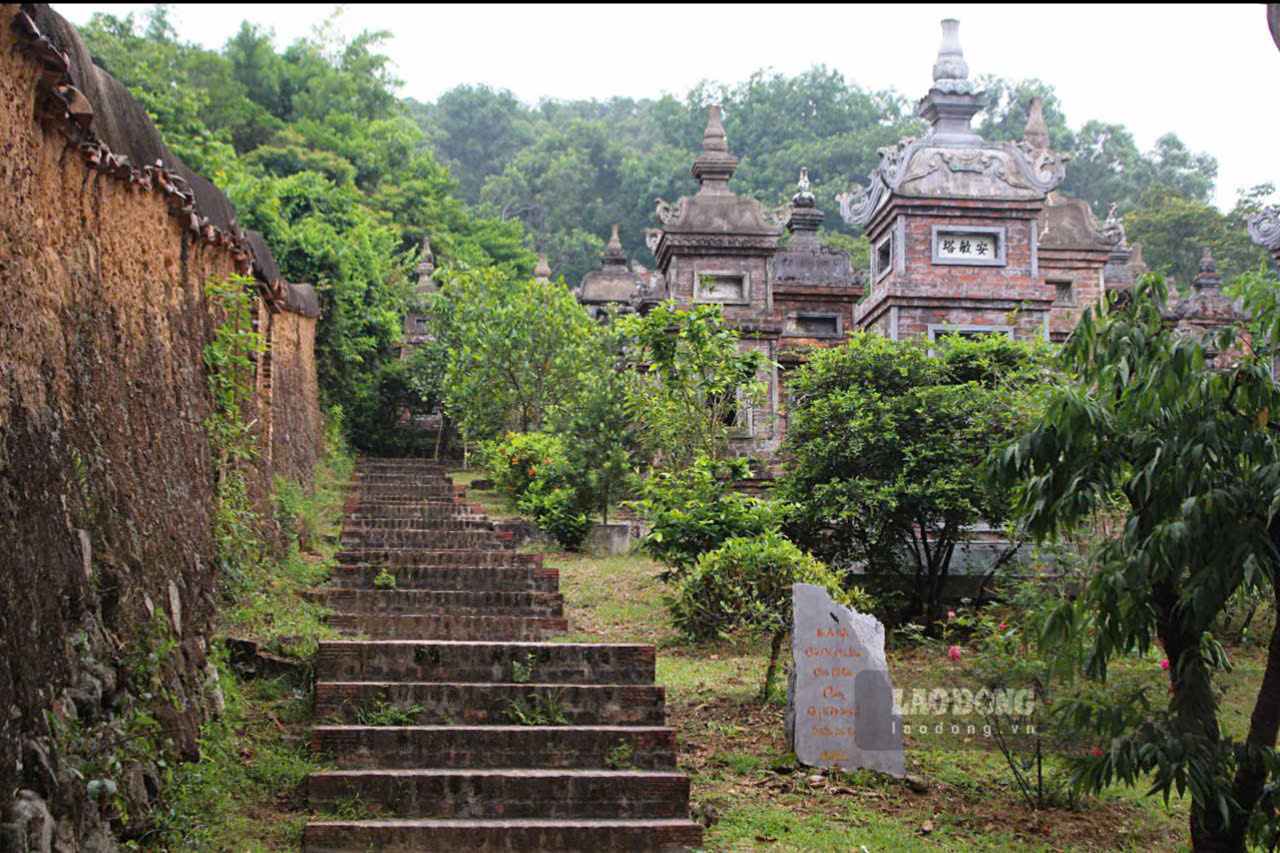
The unique feature of Bo Da Pagoda compared to many other ancient scenic spots is that the pagoda's tower garden is also built with earthen walls and stone embankments to protect it, with 110 towers and various large and small tombs, of which, there are 97 ancient towers with a history of hundreds of years as a place to store the ashes of the humiliating monks of 1214 Buddhist monks of Lam Te Zen sect in the whole country.
Bo Da Pagoda currently preserves a treasure trove of Han Nom heritage in many types and the Buddha's plantain set is one of the oldest wooden carvings in Vietnam.
The pair of books is arranged in 8 pricebooks, each price has 4 sets of books including 240 composite wooden planks, all of which are about 2,000 pieces. Each piece of pine wood is used to engrave the incense, usually 50cm long, 25cm wide and about 2.5cm thick. If you want to see the entire ancient capital treasure trove here at the same time, you must have a 250m2 plot of land to spread the capital planks out.
But Thap Pagoda
But Thap Pagoda, located in Tri Qua ward, Bac Ninh province. This pagoda is considered one of the most beautiful ancient Buddhist architectural masterpieces in Vietnam.
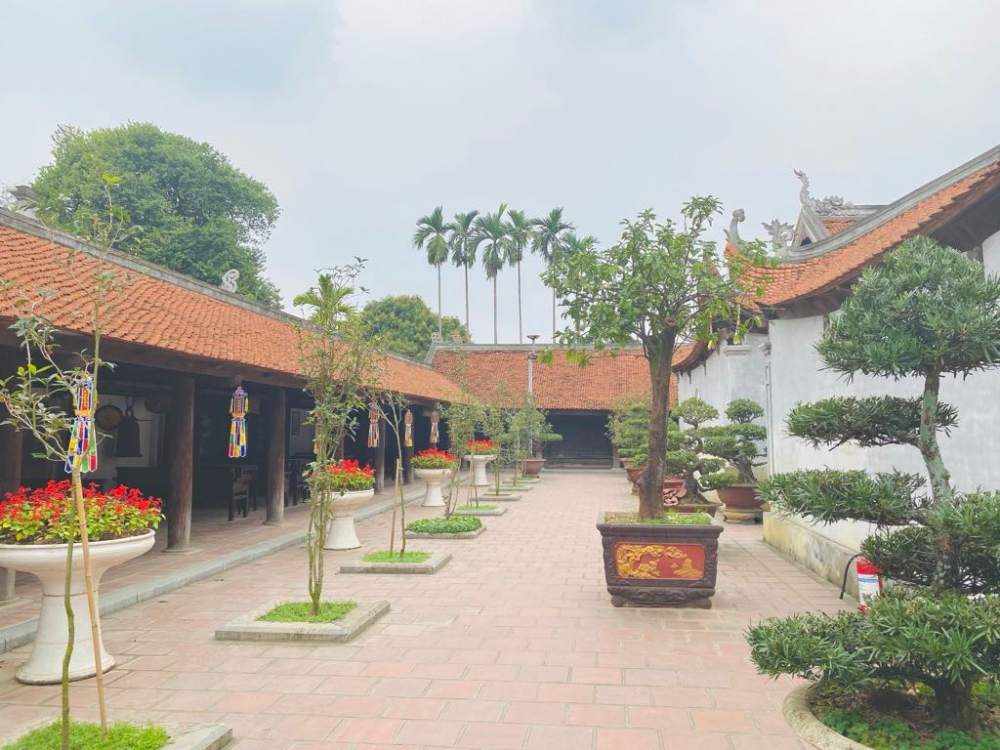
The pagoda has a unique architecture with many separate buildings, connected and separated by outdoor yard space, creating a wonderful harmony. The most prominent is Nghiem Newspaper Tower, with the shape of a pen and feather extending into the sky. In particular, the statue of Buddha Ba Quan Am with thousands of eyes and thousands of hands here is a unique sculpture, exuding majesty and compassion.
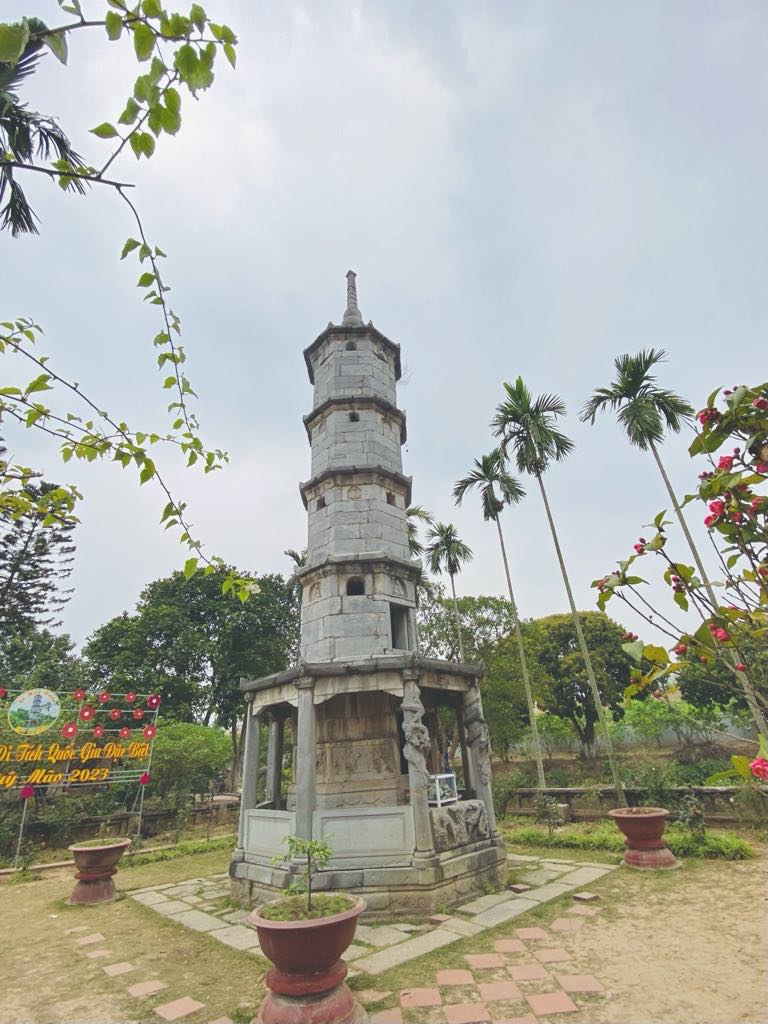
Entering the pagoda, visitors will immerse themselves in the peaceful space, the rows of ancient trees covered in shade and the ancient beauty of each house, communal house roof...
Phat Tich Pagoda
Phat Tich Pagoda, located in Phat Tich Commune, Bac Ninh Province. This pagoda, also known as Van Phuc pagoda, has a history of formation since the Ly Dynasty (11th century) and was once a major Buddhist center of the country.
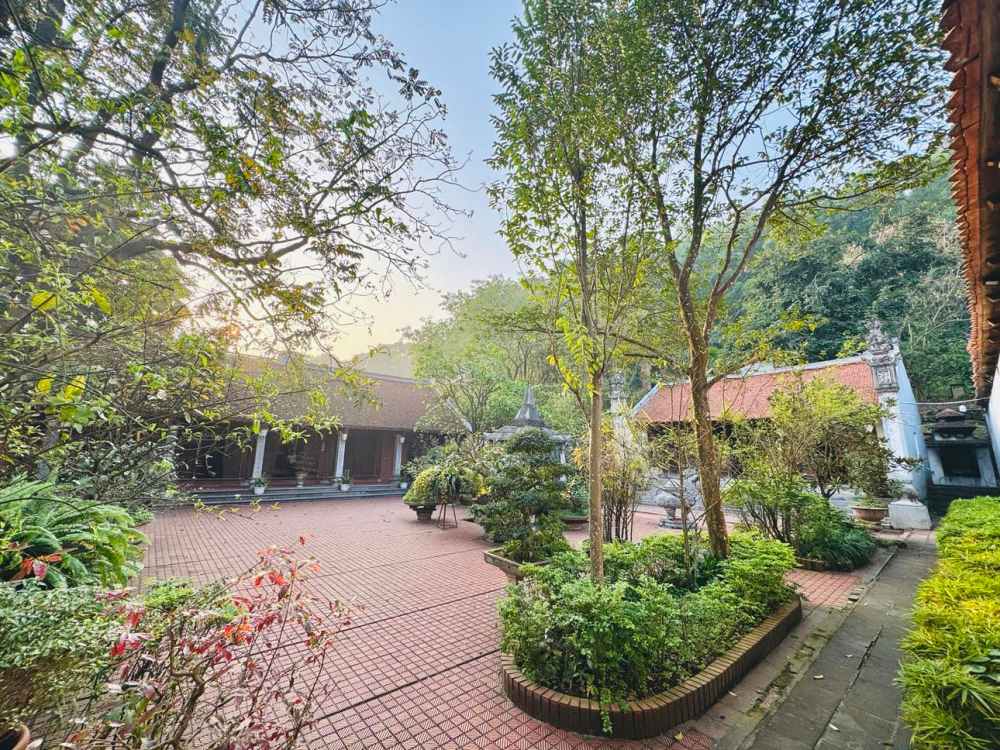
Despite many historical events and wars, Phat Tich Pagoda still retains its ancient, majestic beauty.
The most famous is the beautiful solid stone Buddha statue of A Di Da, a pinnacle sculpture of Ly - Tran art, with a gentle, peaceful smile that soothes all the pleasures in the hearts of visitors.
The pagoda campus is spacious with ancient remains, ancient banyan trees shade, creating a peaceful and solemn space.
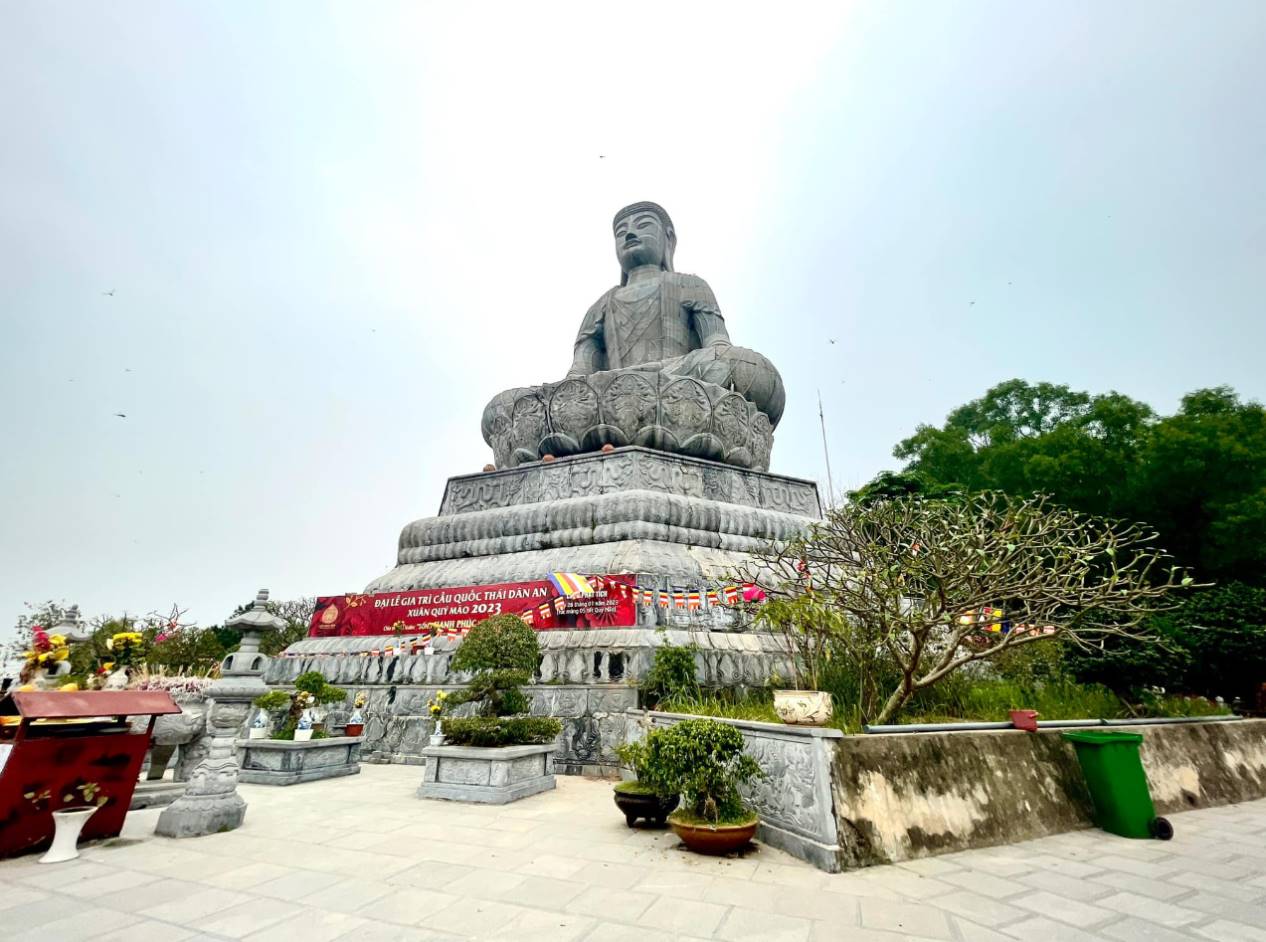
Dau Pagoda
Dau Pagoda is currently located in Tri Qua ward, Bac Ninh province. Considered the oldest Buddhist temple in Vietnam, Dau Pagoda has a history of more than 2,000 years, associated with the first steps of Buddhism in Vietnam.
Dau Pagoda also has many other names such as Ca Pagoda, Co Chau Pagoda, Dien Ung Tu, or Phap Van Pagoda. The pagoda was built from around 187 to 226.

The architecture of Dau Pagoda bears the mark of the early Buddhist period, with simple, rustic works but still exuding sacredness and characteristic ancient beauty.
This place worships Buddha Phap Van (also known as the May God) one of the Fourings - four natural gods worshiped in folk beliefs and Buddhism.
Coming to Dau Pagoda, visitors not only worship but also feel the historical flow, the unique cultural intersection that is rarely found anywhere else.

Tieu Pagoda
Tieu Pagoda, also known as Thien Tam, located on the back of Tieu Mountain, in Tam Son Ward, Bac Ninh Province, is the next stop. This pagoda has profound historical significance when associated with the name of Zen master Van Hanh, who was meritorious in educating Ly Cong Uan, the king who founded the Ly Dynasty.
The current architecture of Tieu Pagoda is the result of many restorations, bearing a strong artistic imprint of the Le - Nguyen Dynasty. Tieu Pagoda is not only a place of worship but also an important historical site, preserving profound Buddhist cultural values.
In particular, the pagoda is famous for not having a traditional donation box.
Lim Pagoda
The end point of the day's pilgrily in Bac Ninh is Lim Pagoda, or Hong An Pagoda, located in Tien Du commune. This is not only an ancient pagoda with unique traditional Northern architecture but also a famous cultural and religious center.
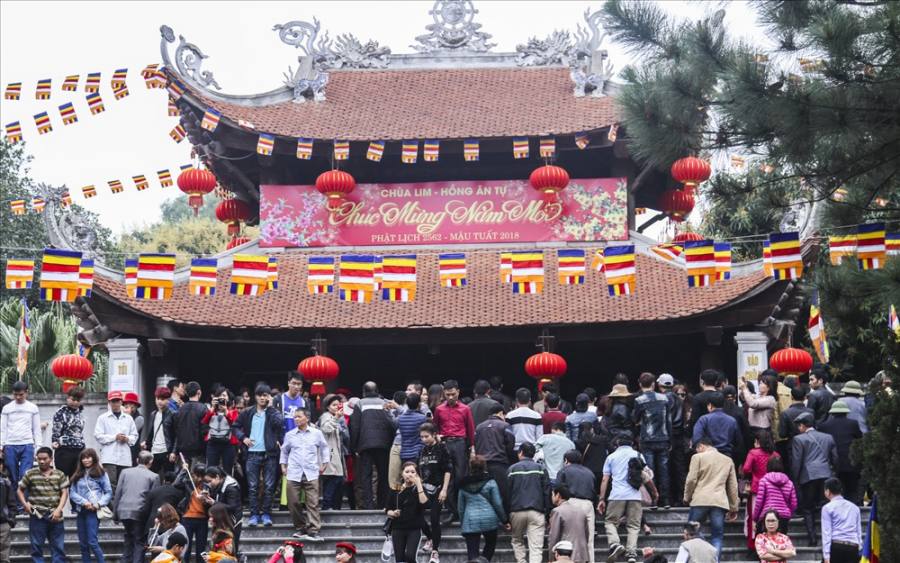
This pagoda is especially associated with the Lim festival - one of the largest and most typical royal festivals in the Kinh Bac region. Although the current scale may be more modest than before, the pagoda is still bustling with visitors from all over the world thanks to the echo and appeal of the Lim festival.
Lim Pagoda has a peaceful, ancient beauty, is a place for local people to find peace and is also an attractive destination for tourists who want to explore Quan Ho culture and traditional temple architecture.


